My husband collects lighters. I collect garden plants. One the one hand I want to have as many different plants as possible and on the other hand as many interesting varieties of one kind of plant as possible. One of those kinds of plants are Salvias.
Salvias are of course predestined for a Mediterranean garden without watering since most of them are extremely drought-resistant as well as pretty hardy to -8 or -12℃. They are evergreen and have lovely flowers, most have deliciously aromatic leaves and can be used as an herb or even as food – what’s not to love? It is also supposedly a good idea to plant smaller salvia next to roses against aphids or fungal infections.
Most salvia need light, well-drained soil and full sun and have a high drought-tolerance. Some are a little more shade-tolerant and need a bit more water.
Be careful with watering Salvia though, because they are susceptible to phytophtora, a fungus infection occurring when wet roots meet warm temperatures. Most Salvia varieties do not need watering once they are fully established. They should only be watered if summers are very hot and dry and the foliage starts to show signs of suffering by becoming soft, dry, or droopy.
My Salvia Collection
Salvia lycioides
A small (30×40 cm) variety with cassis-scented leaves and deeply purple-blue flowers from May through October. It is a native of New Mexico where it is called canyon sage.
Salvia chamaedryoides var. Isochroma
A variety with silvery green aromatic leaves and very blue flowers from May through July and again in the fall. Grows to 40×60 cm and is a native of Mexico.
Salvia chamelaeagnea
A variety of 80cm with very aromatic leaves and violet-yellow flowers from July through September. It is a native of South Africa.
Salvia fruticosa / triloba
An Eastern Mediterranean native of medium-size (80×80 cm) with very aromatic leaves and rose-purple flowers in March and April.
Salvia fruticosa ‘Mas de Lunès’
Hybrid of Salvia officinalis and fruticosa. Grows to 60×60 cm with very aromatic leaves and lots of violet flowers in April and May.
Salvia pomifera
A variety with very aromatic leaves and blue-purple flowers in April and May. It is a native of Greece and Turkey and grows to about 60×80 cm.
Salvia greggii “Mirage Cream”
The longest-blooming of all my Salvia with cream-colored flowers from March through June and again in the fall. Small of size (50x50cm), it has aromatic cassis-scented leaves. It is also a Mexican native.
Salvia jamensis “Violette de Loire”
Salvia jamensis is a hybrid of Salvia greggii and Salvia microphylla and grows to about 70×80 cm. It has the same cassis-scented leaves but smaller flowers in a variety of very luminous colors. “Violette de Loire” is a deep magenta-purple and blooms from April through June, as well as in the fall. It is slightly less drought-tolerant than other salvias.
Salvia nemorosa
Salvia nemorosa is native to Central Europe and Western Asia. It is slightly less drought-tolerant than other salvias and can be planted in sun or half-shade. I planted the varieties “Schneehügel”, “Crystal Blue” and a purple one without a name (Mainacht, Blaukönigin, Caradonna?). They bloom from April through October and grow to about 40×40 cm.
Salvia canariensis
This Salvia from the Canary Islands grows to an imposing 200×150 cm. The flowers are pale purple to deep magenta in color and bloom from May through September.
Salvia leucophylla “Bee’s Bliss”
A hybrid of the Californians Salvia leucophylla and sonomensis and a very vigorously ground-covering Salvia with upright flower spikes. It grows to about 30 x 80 cm with tall flower spikes in light violet that are truly “the bee’s knees” when they flower between April and June. It has a high drought tolerance but foliage may drop towards the end of a very dry summer.
Salvia lavandulifolia blancoana
A ground-covering salvia from Spain, growing to 20 x 50 cm with blue-violet flower spikes in April-May and very aromatic leaves.
Salvia multicaulis
A funny looking native of the Middle East with aromatic leaves. It grows low to the ground (10×40 cm) and has tall spikes of purple flowers from March to June with crimson calyxes that turn spectacular in color and form at the end of flowering. The leaves can be used in cooking just like those of Salvia officinalis.
Salvia officinalis
A native Mediterranean variety of about 60cm height with purple flowers from May through September. It’s the variety most used in cooking and for medicinal purposes.
Salvia apiana
A tall Californian native that grows to about 100 x 100 cm. Its leaves have a strongly resinous incense aroma, the flowers are white to pale lavender and very attractive to bees. For native American people in the Southwestern US it is a food and medicinal plants.
Salvia sclarea
Unlike other salvia, Salvia sclarea is biennial, not perennial. It is a Mediterranean and North African native so it should be able to tolerate drought and heat. However, it has taken me three years of trying to finally have a thriving specimen (self-seeded… go figure) of about thigh-height that has been flowering since the end of May. In Switzerland they grew to about 160cm and produced flower head after flower head for a very long time.
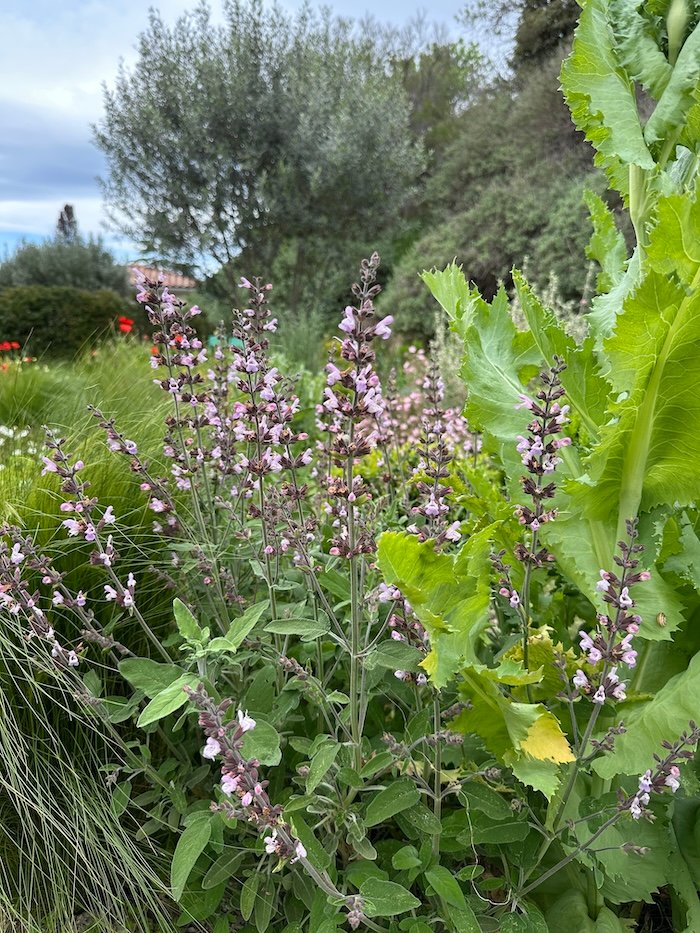


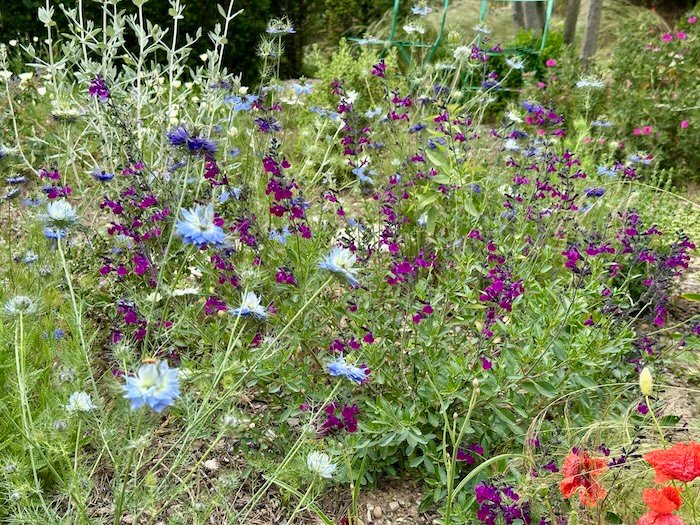
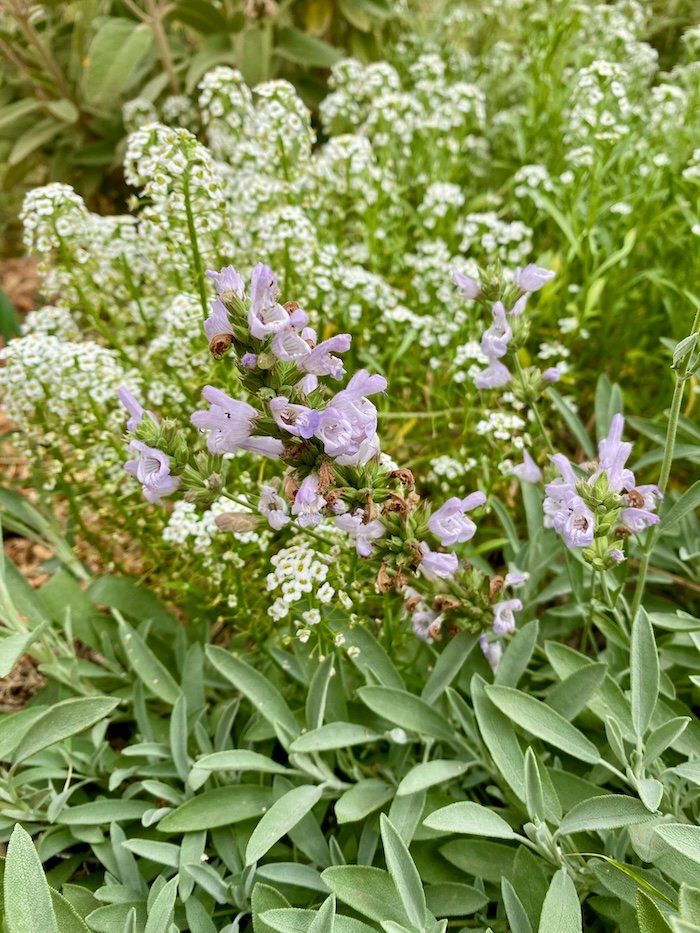
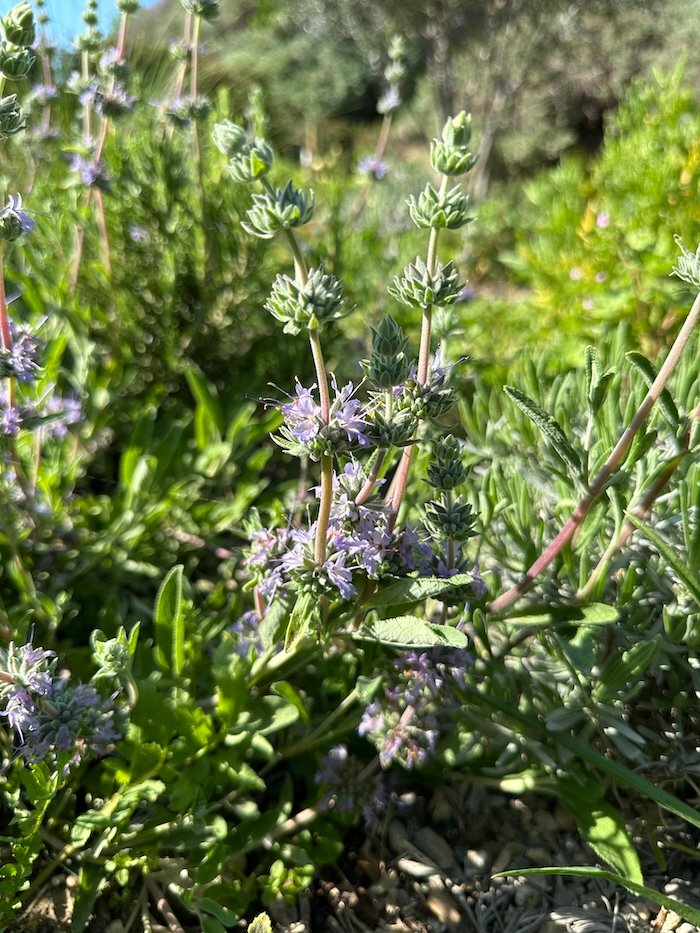

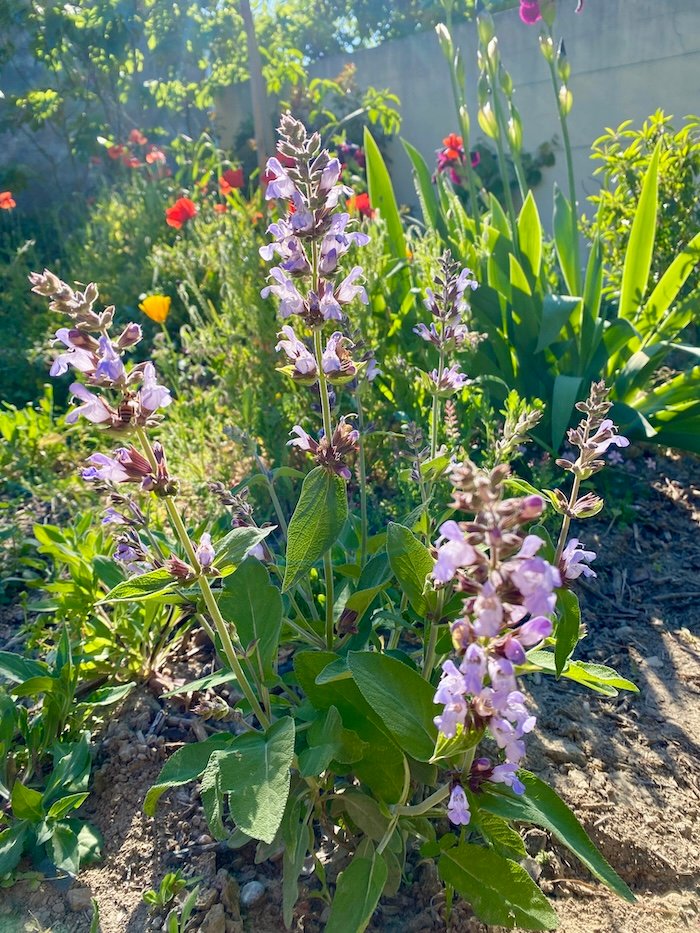
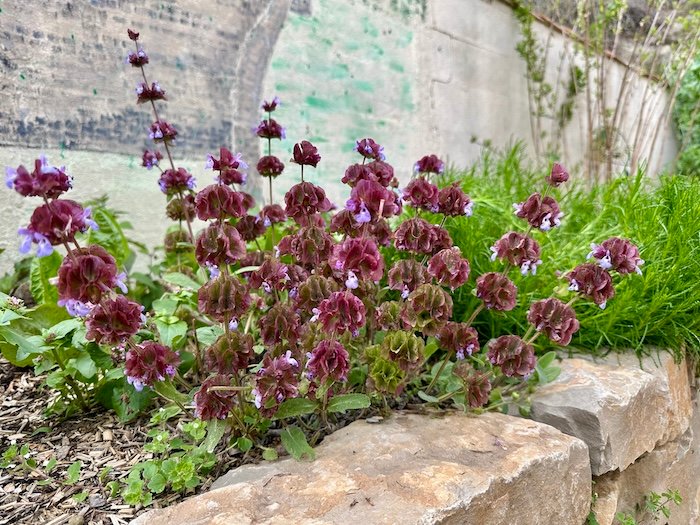
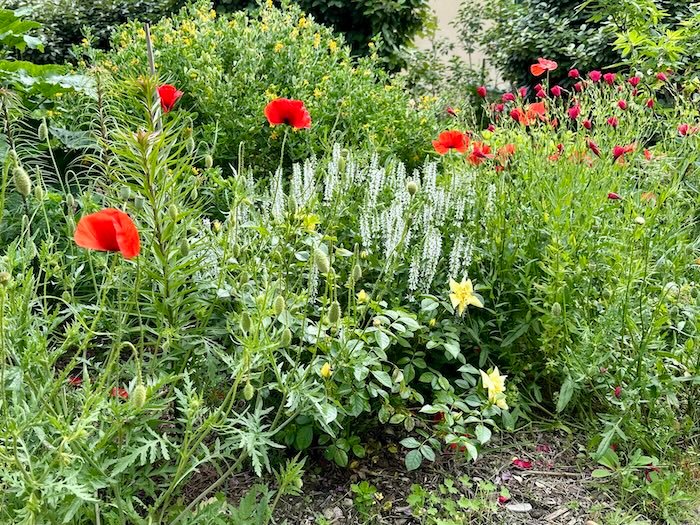


Will there be more Salvias to come?
Yes, there are other varieties that look to pretty and are too interesting to do without. For example Salvia viscosa, Salvia scabra, Salvia pachyphylla, Salvia amplexicaulis, Salvia argentea, Salvia interrupta, Salvia candelabrum, salvia virgata, Salvia clevelandii and maybe also a Salvia microphylla in dark red… I do have some space left…
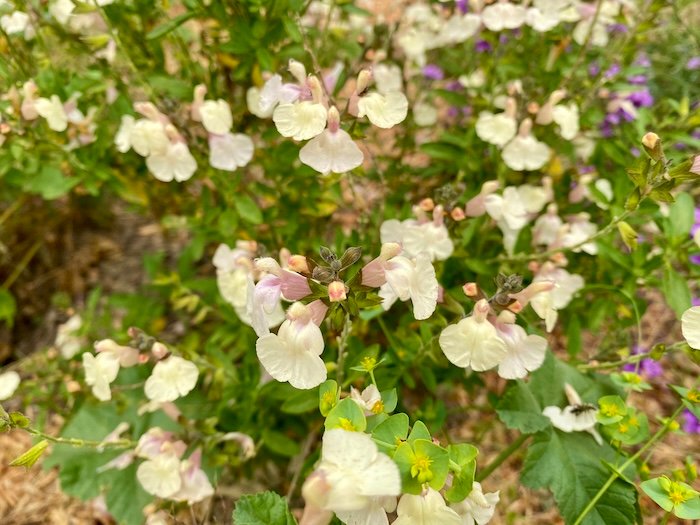
Leave a Reply